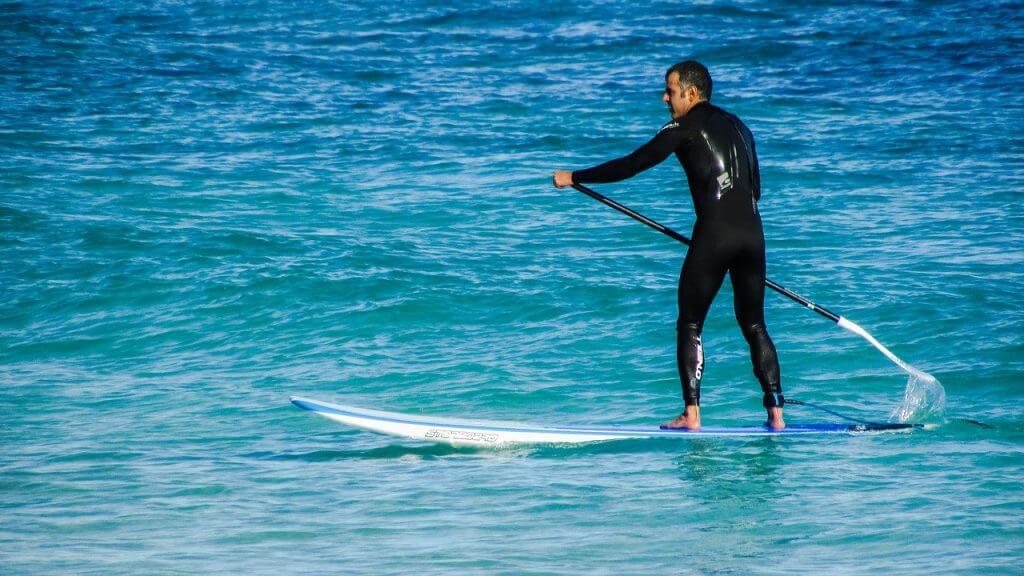
Stand-up paddleboarding is more versatile than people tend to think. From a relaxing meander on calm waters to a full-body workout in rolling waves, the stand-up paddle (SUP) board can do it all. There are even some people who like to do their yoga sessions on a SUP board.
Many places hire out paddleboards for you to enjoy. However, once you get a taste of the sport, you’ll probably want to invest in your own SUP. When purchasing a SUP board, consider how you intend to use it. Be reassured, however, that whatever you want a SUP board for, there will be one out there that’s perfect for you.
Get the Right Volume and Weight Capacity
It is likely to be challenging to keep your balance as you use a stand up paddleboard. If you get a board with not enough volume and weight capacity, you may find yourself sinking fast.
The volume and weight of the board are most important because they affect how stable you will be in the water and how well you move. Getting a board where the volume and weight capacity are too high can cause the board to wobble.
- Volume: An SUP board’s volume is expressed in liters. The higher the volume, the more weight it can bear.
- Weight capacity: Every SUP board will state its weight capacity. Ensure you purchase one that is sure to carry your weight.
Different Lengths for Varied Needs
Although SUP boards come in many different lengths, they fall into three categories. Each length is good for different purposes:
- Long: (12ft – 14ft) Perfect for long-distance paddling and going fast
- Medium: (10ft – 12ft) All-purpose board and the best for SUP yoga
- Short: (10ft and under) The best for children and surfing activities
The Width of the SUP Also Plays An Important Role
As well as selecting the correct length SUP, you also need to consider the board’s width. Wider boards will offer you more stability, but they will be slower. Narrower boards will give you a faster paddle but won’t keep you as steady.
- Body size is important for choosing the correct width. Your size directly relates to getting the volume and weight capacity correct as detailed above:
- Smaller individuals should opt for a narrower board.
- Larger individuals need to go with a wider model.
- Skill level also determines the width you require:
- If you’re confident on a SUP, you may prefer a narrow model
- New or nervous paddlers would benefit from more stability from a wider version.
- Lastly, the type of activity you intend to do will influence your choice.
- Those who want to take their SUP long distances will likely prefer a wide model that can offer more storage space.
- For yoga, a wide board of 31 inches or more is recommended to perform poses safely.
- For short trips, racing, and surfing, you’ll need a narrow board to get that speed up.
Do You Want A Planing or Displacement Hull?
SUP boards have either a planing or displacement hull or sometimes a hybrid version of both types. Each hull has advantages. Again, these depend on how you plan to use the board.
- Planing hull: The wide and flat design makes this type of hull best for yoga, surfing, whitewater paddling, and leisure paddling.
- Displacement hull: This hull has a pointed nose, making it perfect for racing, fitness paddling, and long-distance touring.
- Hybrid hull: The hybrid combines the best attributes of the planing and displacement hulls. This model is excellent if you plan to use your board for every type of activity without aiming to excel. However, if you plan to specialize in one area of SUP, seek the hull that’s best for your chosen purpose. This is because the single-purpose hulls will perform better overall than the hybrid.
Choosing a Solid or Inflatable SUP Board
All types of SUP boards are available in a solid or inflatable variety. The solid variety also comes in a range of different materials, from carbon fiber (the lightest and most expensive) to plastic (the cheapest but heavy).
Choose a solid board if:
- You have the storage space.
- Performance is a top priority.
- You need a board finely tuned to your body.
Choose an inflatable board if you:
- have limited storage space.
- want to paddle in white water or do SUP yoga.
- travel a lot.
Once you have the right SUP board, you can enjoy the relaxing sport of paddleboarding safely. If you are looking for a place to get some deals on a SUP board, check out some of these stand up paddle boards on sale.
Share this:




